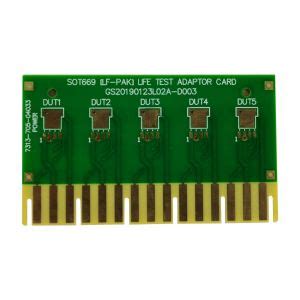Introduction to PCB Reliability
Printed Circuit Board (PCB) reliability is a critical factor in ensuring the longevity and performance of electronic devices. In today’s fast-paced and technology-driven world, PCBs are found in almost every electronic device, from smartphones and laptops to industrial equipment and aerospace systems. The reliability of these PCBs directly impacts the functionality, safety, and user experience of the end products.
SAP, a global leader in enterprise software and solutions, has been at the forefront of developing and implementing PCB reliability standards and practices. In this article, we will explore the importance of PCB reliability, the factors that influence it, and the steps taken by SAP to ensure the highest level of reliability in their products.
Factors Affecting PCB Reliability
Several factors can impact the reliability of a PCB. Understanding these factors is crucial for designing, manufacturing, and testing PCBs that can withstand the rigors of real-world applications. Some of the key factors affecting PCB reliability include:
1. Material Selection
The choice of materials used in PCB fabrication plays a significant role in determining its reliability. The substrate material, copper thickness, and solder mask quality are some of the essential considerations. SAP ensures that high-quality, industry-standard materials are used in their PCBs to minimize the risk of failures due to material defects.
2. Design and Layout
The design and layout of a PCB can greatly influence its reliability. Factors such as trace width, spacing, and routing can impact the signal integrity and thermal management of the board. SAP follows strict design guidelines and employs advanced CAD tools to optimize the PCB layout for maximum reliability.
3. Manufacturing Process
The manufacturing process of a PCB can introduce various defects and inconsistencies that can affect its reliability. Issues such as poor soldering, incorrect component placement, and contamination can lead to early failures. SAP works closely with their manufacturing partners to ensure that strict quality control measures are in place throughout the production process.
4. Environmental Factors
PCBs are often exposed to harsh environmental conditions, such as extreme temperatures, humidity, and vibrations. These factors can accelerate the aging process and cause premature failures. SAP designs their PCBs to withstand these environmental stressors and conducts extensive testing to validate their performance under various conditions.

SAP’s Approach to PCB Reliability
SAP takes a comprehensive approach to ensure the reliability of their PCBs. This approach involves a combination of rigorous testing, advanced analytics, and continuous improvement. Let’s take a closer look at some of the key elements of SAP’s PCB reliability strategy.
1. Comprehensive Testing
SAP conducts extensive testing to validate the reliability of their PCBs. This testing includes both in-house and third-party evaluations, covering a wide range of parameters such as thermal cycling, vibration, shock, and humidity. The test results are carefully analyzed to identify any potential weaknesses or failure modes.
2. Advanced Analytics
In addition to traditional testing methods, SAP leverages advanced analytics and machine learning techniques to predict and prevent PCB failures. By collecting and analyzing vast amounts of data from various sources, including manufacturing, field returns, and customer feedback, SAP can identify patterns and trends that may indicate potential reliability issues.
3. Continuous Improvement
SAP believes in the philosophy of continuous improvement when it comes to PCB reliability. They regularly review and update their design guidelines, manufacturing processes, and testing procedures based on the latest industry standards and best practices. This proactive approach helps them stay ahead of potential reliability challenges and ensures that their PCBs remain reliable throughout their lifecycle.

Real-World Examples of SAP’s PCB Reliability
To illustrate the effectiveness of SAP’s PCB reliability approach, let’s look at a few real-world examples:
Example 1: Aerospace Application
SAP designed and manufactured PCBs for a critical aerospace application. These PCBs were subjected to extensive testing, including thermal cycling, vibration, and altitude tests. The test results demonstrated that the PCBs could withstand the extreme conditions encountered in aerospace environments, ensuring the reliability and safety of the end product.
Example 2: Industrial Automation
In an industrial automation project, SAP implemented advanced analytics to monitor the performance of PCBs in real-time. By analyzing the data collected from sensors and other sources, SAP was able to detect potential reliability issues early and take proactive measures to prevent failures. This approach resulted in increased uptime and reduced maintenance costs for the customer.
Example 3: Consumer Electronics
SAP worked with a leading consumer electronics manufacturer to improve the reliability of their PCBs. By optimizing the design and manufacturing processes based on the analysis of field return data, SAP was able to significantly reduce the failure rate of the PCBs. This improvement led to increased customer satisfaction and reduced warranty claims for the manufacturer.

Frequently Asked Questions (FAQ)
-
Q: What is PCB reliability, and why is it important?
A: PCB reliability refers to the ability of a printed circuit board to perform its intended function under specified conditions for a given period. It is essential because PCB failures can lead to product malfunctions, safety issues, and customer dissatisfaction. -
Q: What are some common causes of PCB failures?
A: Common causes of PCB failures include material defects, design flaws, manufacturing issues, environmental stressors, and improper handling or installation. -
Q: How does SAP ensure the reliability of their PCBs?
A: SAP ensures PCB reliability through a combination of comprehensive testing, advanced analytics, and continuous improvement. They follow strict design guidelines, work closely with manufacturing partners, and leverage data-driven insights to predict and prevent failures. -
Q: What types of tests are conducted to validate PCB reliability?
A: PCB reliability tests include thermal cycling, vibration, shock, humidity, and altitude tests, among others. These tests are designed to simulate the real-world conditions that PCBs may encounter during their lifecycle. -
Q: How can advanced analytics help improve PCB reliability?
A: Advanced analytics can help identify patterns and trends in PCB performance data, enabling early detection of potential reliability issues. By analyzing data from various sources, such as manufacturing, field returns, and customer feedback, companies can take proactive measures to prevent failures and improve overall reliability.
Conclusion
PCB reliability is a critical aspect of ensuring the performance, safety, and longevity of electronic devices. SAP, as a global leader in enterprise software and solutions, has demonstrated its commitment to PCB reliability through its comprehensive approach, which encompasses rigorous testing, advanced analytics, and continuous improvement.
By understanding the factors that influence PCB reliability and implementing best practices in design, manufacturing, and testing, SAP has been able to deliver reliable PCBs for a wide range of applications, from aerospace to consumer electronics.
As technology continues to evolve and the demand for reliable electronic devices grows, the importance of PCB reliability will only increase. Companies like SAP that prioritize PCB reliability and invest in advanced techniques and methodologies will be well-positioned to meet the challenges of the future and deliver products that meet the highest standards of quality and performance.

No responses yet